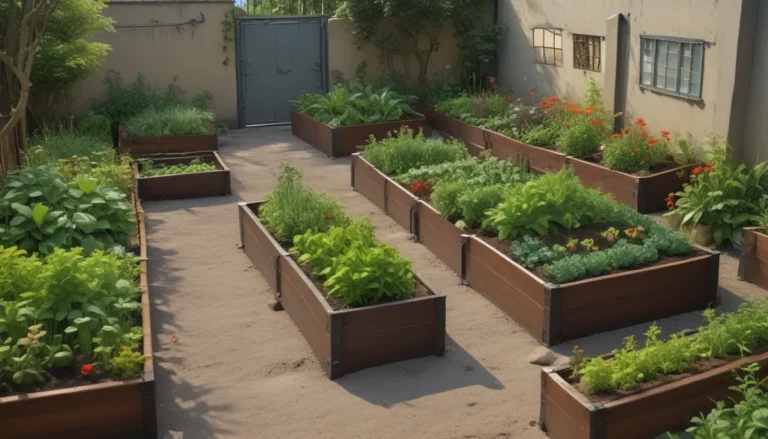How to Grow and Care for Aloe Vera: Your Comprehensive Guide

Are you interested in adding a versatile and beautiful succulent to your indoor garden? Aloe Vera is the perfect addition! Not only does it make a stunning ornamental plant, but it also offers incredible utility as a natural remedy for minor burns and skin irritations.
If you spend time outdoors or enjoy gardening, you know the importance of protecting your skin from the sun. Even with the best precautions, sunburns can happen. And that’s where aloe vera comes in – providing soothing relief for your skin.
Gone are the days of rushing to the store for a bottle of aloe vera gel. By growing your aloe plant at home, you can have instant access to fresh, natural gel free from harmful additives.
Research indicates aloe vera gel can help speed up the healing process for sunburns and other skin ailments. With its unique composition of water, amino acids, enzymes, minerals, vitamins, and anti-inflammatory hormones, aloe vera is a powerhouse of healing properties.
Let’s dive deeper into the world of aloe vera and explore how you can grow and care for this incredible succulent:
What Is Aloe Vera?
Aloe vera, scientifically known as A. vera, belongs to the Asphodelaceae family rather than the cactus family, despite its appearance. Its long, thick leaves sprout from a short stem, with green leaves speckled in youth and serrated edges.
Commonly referred to as the first aid plant or true aloe, aloe vera is a popular choice for natural remedies due to its healing gel stored in the mesophyll layer of its leaves.
The gel within aloe leaves contains 99% water along with a wide range of beneficial compounds. From bug bites to burns, aloe vera gel is a go-to solution for various skin issues.
However, it’s essential to note that aloe vera also contains a layer of latex between the skin and the gel, containing aloin, a substance with potential laxative effects. It’s crucial to avoid ingesting any part of the plant, especially if you have a latex allergy.
Cultivation and History
Originating from the Arabian Peninsula, aloe vera has a rich history dating back thousands of years. Used by ancient civilizations like the Egyptians and Sumerians, this succulent was prized for its healing properties and resilience.
In modern times, aloe vera has become a staple in medicinal and cosmetic products worldwide. Whether grown indoors or outdoors, aloe vera thrives in arid, tropical, and semi-tropical climates.
Aloe Vera Plant Propagation
When it comes to propagating aloe vera, the process is relatively straightforward. Rather than growing from seeds, aloe vera produces offsets, also known as “pups,” that can be cut and replanted to establish new plants.
To propagate aloe vera from pups, you’ll need a few simple tools such as small containers, cacti and succulent potting mix, and a trowel or knife. By separating the offsets from the parent plant and transplanting them into fresh soil, you can easily propagate new aloe vera plants.
How to Grow Aloe Vera Plants
Whether you’re growing aloe vera indoors or outdoors, providing the right conditions is essential for the plant’s health and longevity. With bright sunlight, well-draining soil, and proper watering, aloe vera can thrive and reward you with its healing gel.
When growing aloe vera as a houseplant, opt for a terra cotta pot with drainage holes and use cacti and succulent potting mix to prevent waterlogging. Place your plant in a sunny location and water sparingly, allowing the soil to dry out between waterings.
During the growing season, feed your aloe vera plant with a succulent fertilizer every month or two to promote healthy growth. Repotting may be necessary every few years to ensure the plant has enough space to grow.
Managing Pests and Disease
While aloe vera is relatively low-maintenance, it can still fall victim to pests and diseases, especially when grown indoors. Common pests such as aphids and gall mites can damage your plant, while diseases like aloe rust can impact its overall health.
By monitoring your plant regularly and taking preventive measures, you can protect your aloe vera from infestations and infections. In case of an issue, promptly address it with appropriate treatments such as insecticidal soap or liquid copper fungicide.
Best Uses for Aloe Vera
Beyond its ornamental value, aloe vera offers a range of practical uses that make it a must-have in any household. From treating minor burns to moisturizing skin, aloe vera gel is a versatile natural remedy with numerous benefits.
To harvest aloe vera gel, simply cut a leaf from the plant, drain the latex, and extract the gel from the inner layer. Store the gel in the refrigerator or freeze it for future use, but avoid ingesting it if you have a latex allergy.
Whether you’re using aloe vera for skin care or decorative purposes, this spiky succulent is a sturdy, low-maintenance plant that can enhance your indoor garden.
By following the tips and guidelines outlined in this comprehensive guide, you can cultivate healthy, vibrant aloe vera plants and enjoy their healing properties for years to come.
Have you grown aloe vera before? What’s your favorite way to use aloe gel? Share your experiences and tips in the comments below!
For more information on succulents and plant care, explore our other gardening guides:
- Agave or Aloe: How To Tell These Plants Apart
- How to Grow Christmas Carol Aloe: Anti-Sting and Makes You Sing
- How to Become a Succulent Pro: Tips for Home Growers
- How to Grow and Care for Christmas Cactus
Remember, with proper care and attention, your aloe vera plant will thrive and provide you with a natural solution for various skin ailments. Cultivate this sturdy succulent in your home and reap the benefits of its healing properties!





